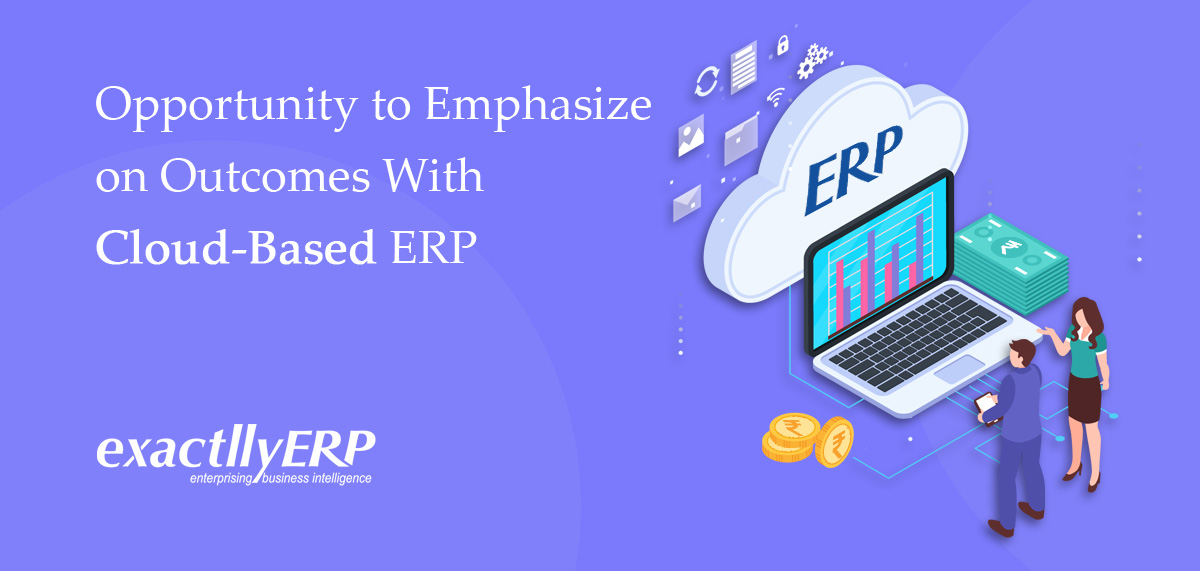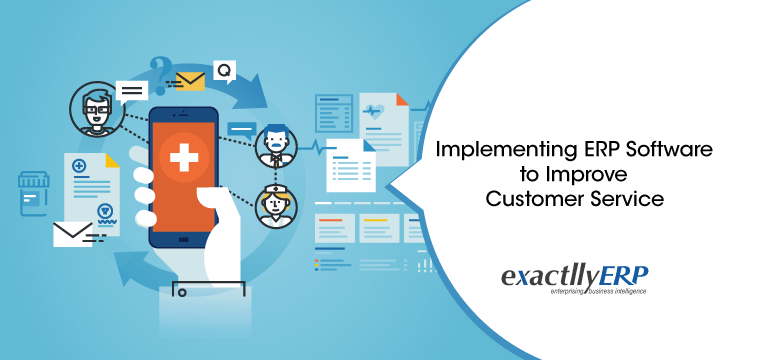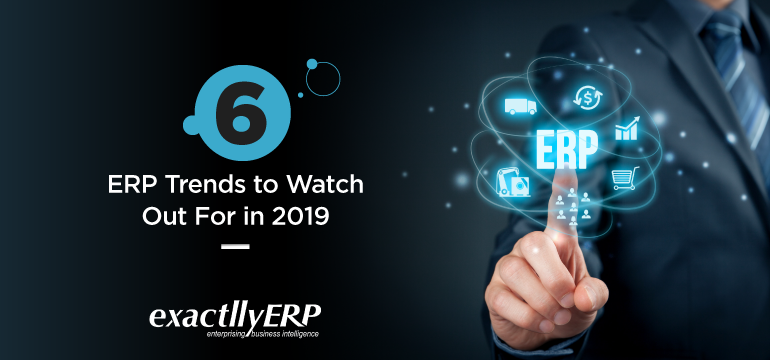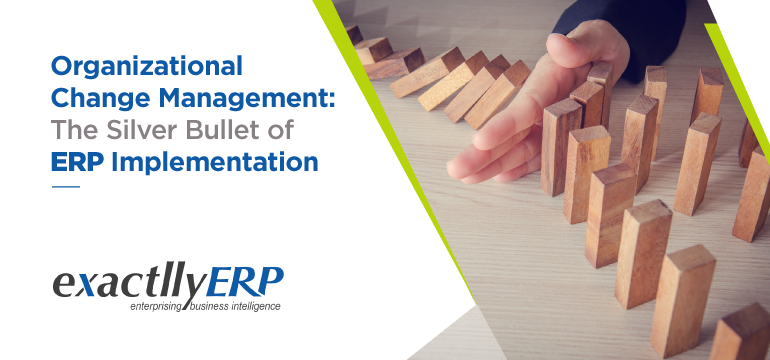How Long Does It Take To Implement ERP?
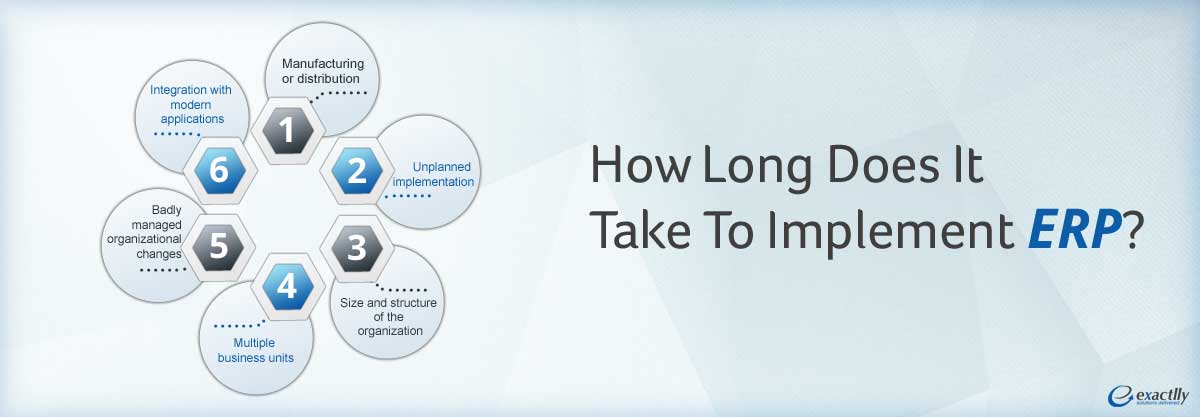
ERP Implementation
Though the question looks straight forward enough, the answer is largely convoluted. ERP implementation is a complex process that depends on factors like type of organization, need of the organization, quality of human capital and type of ERP software chosen. The average time of implementation varies from six months to two years.
The time quoted does not guarantee a successful implementation for many organizations. In worst cases, many companies completely give up the implementation process and come back to their usual way of functioning. It is mainly due to a mismatch between the standardized ERP processes and the actual needs of the organization. Managers must remember that the implementation process is often met by unforeseen challenges that consume unexpected time and money. So the implementation deadlines should be chosen very carefully. The duration of implementation and its success has a far reaching effect on the long-term strategy of the organization.
Let us discuss the various factors that affect ERP implementation process:
a) Organizational factors
- Manufacturing or distribution
The processes in manufacturing companies are often complex due to tangibility of finished goods. Every process adds value and has a significant effect on the end-product quality which means more precision at every step. Consequently, they consume more time and money. On the other hand, in distribution companies, there is no value addition to the end product. The job of the distribution companies is to distribute the product to the customers with a perfect supply chain without comprising product quality and packaging. Quality factor is crucial while distributing perishable items. Nevertheless, distribution processes are much quicker to understand and implement. - Unplanned implementation
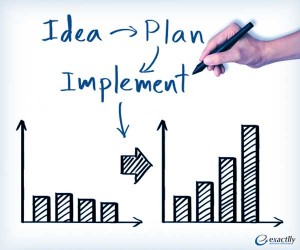
Unplanned implementation can have disastrous consequences. As already mentioned, implementation process is long and complex. The implementation process should be supported by a well laid out plan. The organization must have a contingency plan in case of disruptions during implementation. ERP projects should not be allowed to overpower critical business processes and existing supply chains. - Size and structure of the organization
For a smaller organization, the ERP implementation process is faster as there are limited employees who are affected by the new system and it is easy to train them. In contrast to that, large scale organizations have to consider various factors like number of employees, customers, product lines and production capacity. Though all these factors are important for small-scale organization as well, their impact gets severe in a large-scale organization. Organizational structures with centralized power and formal system of working find it easier to implement ERP projects than the ones with relatively decentralized and informal way of working.
b) Need of the organization
- Multiple business units
An organization with multiple business units spread across the globe with take a long time to implement centralized ERP software. Local factors of every unit will have to be taken into account for successful implementation. On the other hand, if the various business units are located within the same region within similar operating factors, the amount of time taken is considerably less. - Badly managed organizational changes
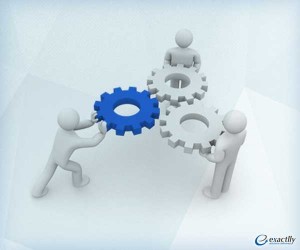
ERP brings with it a new system of working. As a matter of fact, there are significant changes within the organization affecting the employees and outside the organization affecting the vendors and the customers. If the changes are left to pave their own way without intervention from senior management, the organization is left clueless. - Integration with modern applications
Modern ERP software is not limited to the desktop computers of your company. It needs to have a strong mobile application that keeps your employees always posted about the latest development. So, whether it is your sales team or production team, mobile application will prevent communication lags both within the team and between the teams. Integrating ERP software with social media tools is gaining a lot of importance among the organizations to gain speed and accuracy. All these efforts are bound to consume time in the beginning.
c) Quality of human capital
- Number of users
Number of users in an organization is a major determining factor for the time it takes to implement. ERP requires seamless co-ordination among the employees to feed data and interpret the same. Higher the number of users, higher is the time it takes to train them. - Experience among implementation members
If your organization has no employee who has had experience in ERP implementation, then the ERP project becomes a time-consuming affair. Experienced team members in every department offer valuable support and induce efficiency in the system. Else, for every little issue, you need outside support which may not be available instantly. - Vendor support and capability
It is quite possible that vendor support is not available instantly due to their geographical location. Therefore, you lose time in reporting and fixing the issue. Though many vendors offer online support, it requires experienced team members who can follow their instructions. Another critical factor is how experienced your vendors are. If your vendor seeks time to resolve every issue, it clearly reflects his incapability. In order to avoid such a problem, conduct a detailed vendor selection process. - Comfort level of users
There are cases when your employee base is completely out of gear with ERP functioning. Their limited skill set makes it difficult for them to understand the ERP operation. It thereby increases your training time and cost. It is wise to hire employees with basic skill sets and long term vision for your company.
d) Type of ERP software chosen
- SaaS versus on-premise model
While Software-as-a-Service model is inexpensive and faster to implement, it does not offer all the benefits of on-premise model. SaaS model often comes with preset features with little scope for customization. On the contrary, with on-premise software you can avail full-fledged benefits. Depending upon the suitability to your organization, you can select the right ERP model. - Complexity
ERP software especially on-premise model can become considerably complex to handle. In certain cases, it becomes difficult for the organization to handle it further and they are forced to abandon it during the course of implementation. If there are various modules included like customer relationship, inventory, sales, finance etc the level of complexity rises and consequently the time to implement it. - Customization

No ERP software is implemented in its default version. Every business needs customization to relate to the existing business process. Though certain changes are irresistible, utmost care should be taken to manage serious changes. - Selection process
A good selection is preceded by a thorough gap analysis. You must identify the need for ERP software before you indulge in vendor search. Define your needs and stick to that rather than letting the vendor overpower and offer multiple features.
Conclusion
ERP implementation process is long and tedious. The timeline for implementation can only be defined after assessing all the above mentioned factors. Never rush while making vendor selection nor believe in the shorter time frame offered by them. Furthermore, besides having similar business processes, no two clients are exactly similar in operation. So, in case, you are planning to follow the same ERP strategy as your competitor, you must reconsider it.



